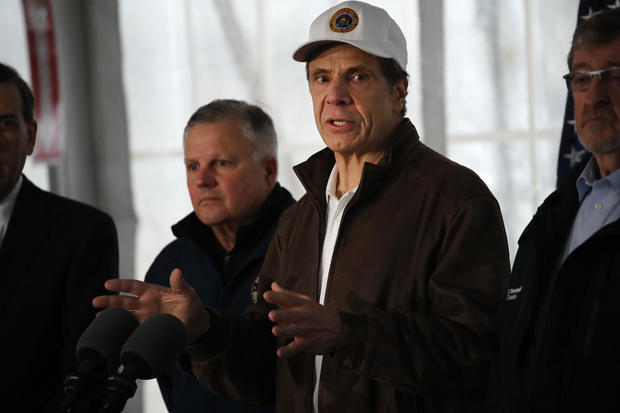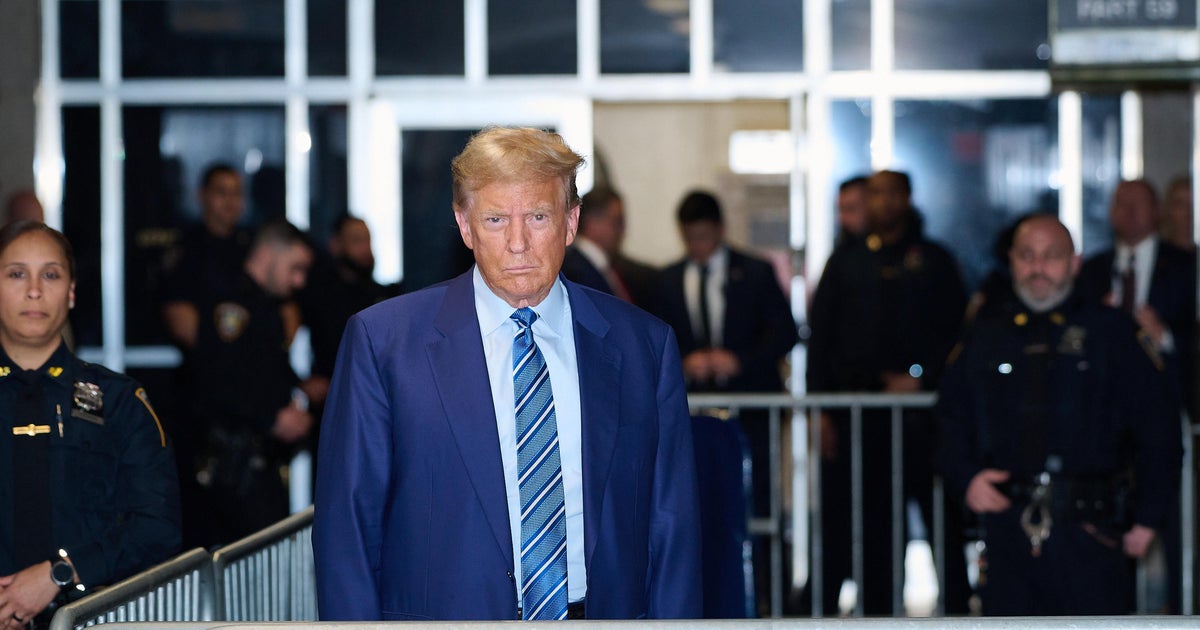Leadership in times of crisis
It's a different kind of reality TV; for a change, it's actually real – must-see viewing for a homebound nation. With the number of coronavirus cases in the United States growing exponentially, nowhere has been harder hit than the New York metro area.
"This is going to be one of those moments they're going to write about and they're going to talk about for generations," said New York Governor Andrew Cuomo.
Without naming the president, Cuomo has begged, cajoled and goaded the federal government to take action: "What am I going to do with 400 ventilators, when I need 30,000? You pick the 26,000 people who are going to die!"
And when announcing the closure of schools and businesses statewide to help contain the spread of COVID-19, he willingly took responsibility: "If someone is unhappy, somebody wants to blame someone, or complain about someone, blame me," Cuomo said.
Meanwhile, President Trump had another take on responsibility, and reality, when asked on March 13 about his administration's weeks-long delay in conducting tests for COVID-19, as the virus spread across the country.
"I don't take responsibility at all," the president told the nation.
He also said, during a Fox News "virtual town hall" on March 24, that he preferred to end social distancing soon: "I would love to have the country opened up and just raring to go by Easter," he said.
The other major player in this drama of dueling daily briefings, Dr. Anthony Fauci, from the National Institutes of Health, a trusted scientist setting the record straight.
"Obviously no one is going to want to tone down things when you see what's going on in a place like New York City," Dr. Fauci said of Mr. Trump's Easter target date. "I mean, that's just good public health practice and common sense."
When Dr. Fauci isn't standing next to the president, a concerned public wonders why.
All of which begs the question: What does leadership look like in this time of crisis?
Governor Larry Hogan of Maryland would argue leadership looks like the nation's governors, far out front of the feds in response to COVID-19, united in their bipartisan push to get what they need.
A Monmouth University Poll released last week found that 72% of Americans think their governor is doing a good job managing coronavirus, compared to 50% who think the president is.
We're learning governors' names as their states struggle: Cuomo of New York, Jay Inslee of Washington, Gavin Newsom of California, Mike DeWine of Ohio, "J.B." Pritzker of Illinois, Gretchen Whitmer of Michigan.
"I think this has been a time where governors really have led," said Hogan, a popular Republican in an overwhelmingly Democratic state, who is also chairman of the National Governors Association. "We've been on the front lines, and we've stepped up to make those tough decisions, governors on both sides of the aisle, but also to push for more action from the federal level."
Correspondent Martha Teichner asked, "And why did you feel that was necessary?"
"Well, because lives were at stake," said Hogan. "Because our citizens needed us to."
Is there any precedent for governors taking the lead? Yes, said historian Doris Kearns Goodwin, whose latest book is "Leadership in Turbulent Times" (published by Simon & Schuster, a part of ViacomCBS). "When I think about FDR and the situation in the Depression before he became president – he's the governor of New York, and New York State was overwhelmed by the Depression – so he started taking action on his own. [Roosevelt was] the first person in the nation, as a governor, to mobilize a comprehensive relief program."
Governor Franklin Delano Roosevelt filled the power vacuum left by President Herbert Hoover in the aftermath of the stock market crash in 1929. Hoover opposed federal intervention; he left it to the states and local governments to cope as the U.S. economy collapsed and the unemployment rate approached 25%.
FDR was elected president in 1932, promising to take charge. In his inaugural address he stated, "This nation is asking for action, and action now."
Goodwin said, "In his inauguration he said the reason we have a problem now was a failure of leadership. I've been elected president. It's a gift to me, and I'm assuming that responsibility."
As Roosevelt stated, "I shall not evade the clear course of duty that will then confront me. I shall ask the Congress for the one remaining instrument to meet the crisis: broad Executive power to wage a war against the emergency, as great as the power that would be given to me if we were in fact invaded by a foreign foe. For the trust reposed in me, I will return the courage and the devotion that befit the time. I can do no less."
Goodwin said, "All of the major leaders, that are the three historic leaders in our country's history – George Washington, Abraham Lincoln, and FDR – faced a crisis, and they handled it really well," said Goodwin. "A crisis is a moment when the nation needs you."
Teichner asked, "How does this crisis stack up against World War II, the Depression and so on? Is this truly a presidency-defining crisis?"
"There's no question that this is a defining crisis for our generation, in my judgment," Goodwin said. "And as a result of it being a defining time for our generation, it's going to be a defining time for the president. History will only know as time goes by, and it depends on how it all turns out, obviously, for how history will define the president's leadership."
And how every other leader is judged as well. Cuomo was speaking to the nation when he addressed his own state's medical crisis: "Look at us today; where we are today, you will be in three weeks or four weeks ... We are your future."
Who's right? The president, who said "We have to get back to work. Our people want to work. They want to go back. We have to go back"? Or public health officials who say it's too soon? Who will win that argument, and with what result?
It's early days still, history's judgment premature. In the meantime, history can remind us how other Americans felt as they were living through earlier crises.
Godwin said, "They don't know that it's gonna turn out all right. They have to have faith, and one thing that history can do is to show you that somehow this country has lived through these tough times before, and we've gotten through it. And I think it gives us that perspective and that solace; it make us feel not alone."
For more info:
- Gov. Larry Hogan of Maryland
- National Governors Association
- "Leadership in Turbulent Times" by Doris Kearns Goodwin (Simon & Schuster), in Hardcover, Trade Paperback, eBook and Audio formats, available via Amazon
Story produced by Mark Hudspeth. Editor: Joe Frandino.






